- Home
- Niagara Falls Hotels
- Restaurants
- Casinos
- Niagara Falls Shut Off
- Niagara Falls USA
- Aquarium of Niagara Falls
- Goat Island
- Lewiston
- Lockport Caves
- Niagara Falls Cave of the Winds
- Niagara Falls Culinary Institute
- Fashion Outlets of Niagara Falls
- Niagara Falls Observation Tower
- Niagara Falls State Park
- Niagara Fishery
- Niagara Gorge Discovery Center
- Niagara Power Vista
- Maid of the Mist
- Oakwood Cemetery
- Old Fort Niagara
- Rainbow Bridge
- Niagara Falls Canada
- Daredevils
- Links
Niagara Falls Sights
Niagara’s Wine Trail
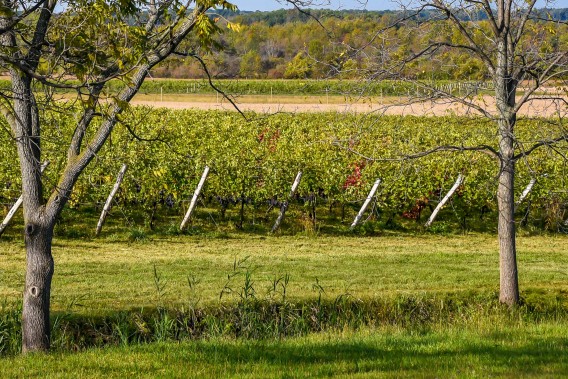
Niagara’s wine trail has become a seasonal attraction in the Niagara Falls region and a tourist attraction in its own right. Situated to the northeast of Niagara Falls itself and just forty minutes from the metropolitan Buffalo area, the Niagara Wine Trail is becoming highly regarded among wine connoisseurs.
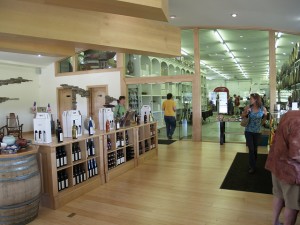 Niagara Wine Trail
Niagara Wine Trail
Although the Niagara Wine Trail is being discovered for the first time by many the art and science of grape growing and wine making has been in this area for many years. There is one winery on the trail that has produced grapes in its vineyard for over 100 years and has been open since the 19th century.
The Niagara Wine Trail has grown in an area that is situated between the Niagara Escarpment and Lake Ontario. This location has created a unique micro-climate which is conducive to the growth and harvesting of the fine grapes that are used to create the fine wines sold on the Niagara Wine Trail.
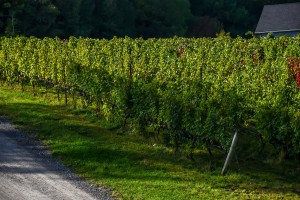 It is not just the climate created by the close proximity to Lake Ontario that creates the fine wines of Niagara. The soil itself which contains the dolomitic limestone of the Niagara Escarpment and the gravel silts which are found near the lake shore add to the fine taste of the wines of the region.
It is not just the climate created by the close proximity to Lake Ontario that creates the fine wines of Niagara. The soil itself which contains the dolomitic limestone of the Niagara Escarpment and the gravel silts which are found near the lake shore add to the fine taste of the wines of the region.
Combining the soil with the moderate climate created by the cool lake breeze in the summer which also protects the vineyards from extreme freeze in the autumn and it’s ideal for growing a wide variety of fruit. Grown in the vineyards are vinifera grapes such as Pinot Noir, Chardonnay, Riesling, Cabernet Sauvignon, Cabernet Franc, Syrah and Merlot.
The aromas and the flavors found from the vineyards of the Niagara Wine Trail are from chemicals in the fruit called fruit esters. The fruit esters take time to grow in the fruit so the longer growing season found in Niagara produces better smells and tastes.
Ice Wines
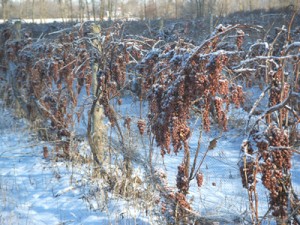 The Niagara Wine Trail is also becoming known for what is called “Ice Wine”. Ice Wines are created after the grapes experience a hard freeze, at least 17 degrees Fahrenheit, after they become ripe. This means that the grapes must remain on the vine for several months after the normal harvest time. Ice Wine is a very sweet wine and not for everyone, but more and more it is being served after a meal and with dessert.
The Niagara Wine Trail is also becoming known for what is called “Ice Wine”. Ice Wines are created after the grapes experience a hard freeze, at least 17 degrees Fahrenheit, after they become ripe. This means that the grapes must remain on the vine for several months after the normal harvest time. Ice Wine is a very sweet wine and not for everyone, but more and more it is being served after a meal and with dessert.
This can be a tricky business for the producers of Ice Wine and the owners of the vineyards because if a freeze does not come quickly enough, the grapes may rot and the crop will be lost. If the freeze is too severe than no juice can be extracted and the crop is lost.
The Niagara Wine Trail ranks among the finest grape growing regions in the world for the production of Ice Wine.
Niagara Falls Culinary Institute Winery
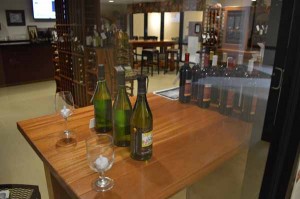 For those who would like to do more than taste the wine from the Niagara Wine Trail, the Niagara Falls Culinary Institute offers wine making classes in a partnership with The Freedom Run Winery. The classes instruct those attending how to perform the necessary skills for seasonal vineyard operations of pruning, disease and pest control, grapevine canopy management, crop regulation and how they relate to wine quality.
For those who would like to do more than taste the wine from the Niagara Wine Trail, the Niagara Falls Culinary Institute offers wine making classes in a partnership with The Freedom Run Winery. The classes instruct those attending how to perform the necessary skills for seasonal vineyard operations of pruning, disease and pest control, grapevine canopy management, crop regulation and how they relate to wine quality.
There are also classes in how to identify wine varieties and describe the historical and cultural geography of the wines of the world and the context of how cool-climate New York and Niagara Escarpment wines fit into the wine market place. The Niagara Falls Culinary Institute offers a Certificate in Wine and Beverage Management and an AAS in Winery Operations.








